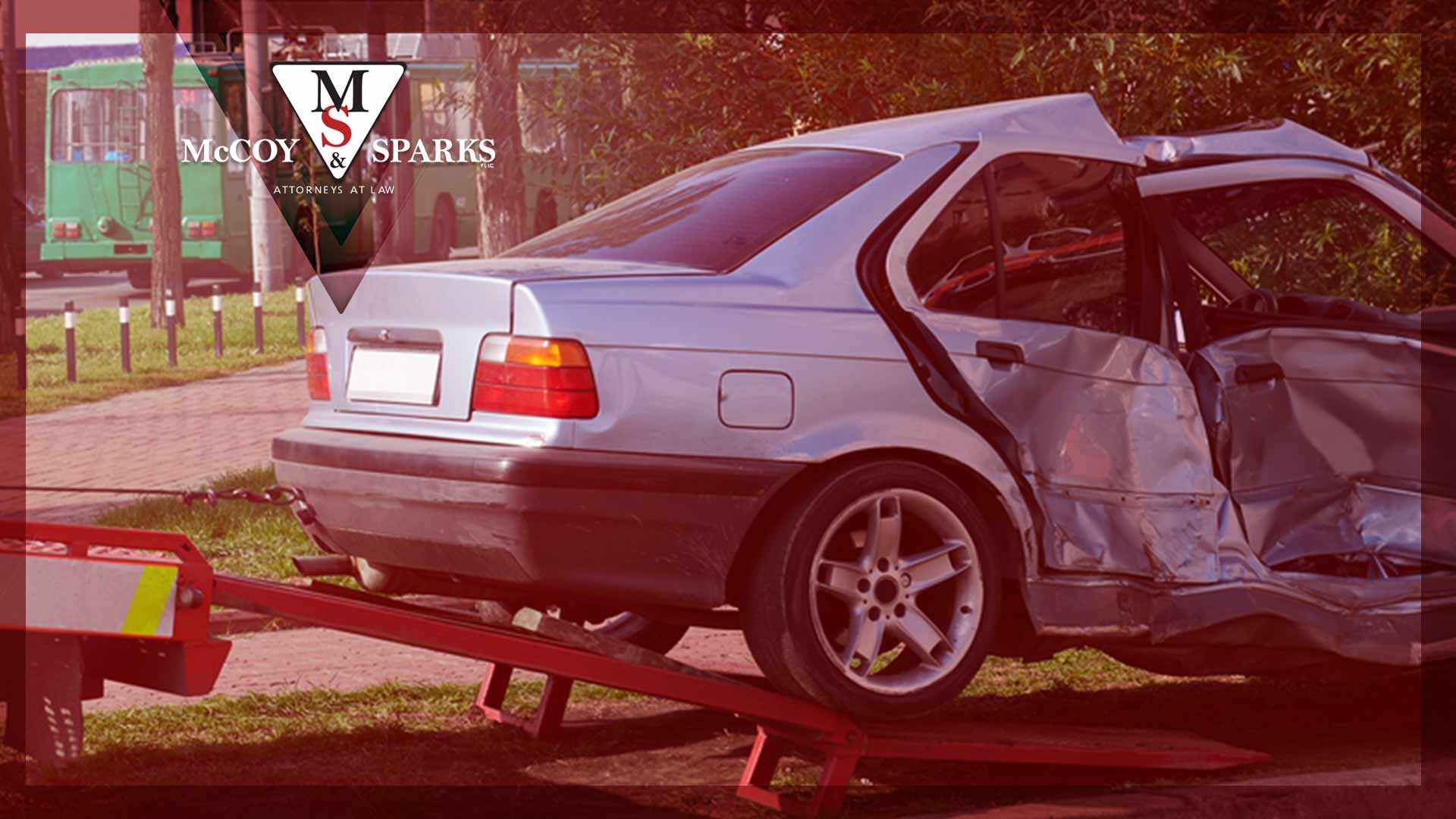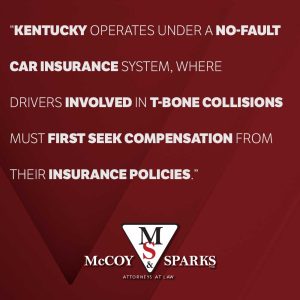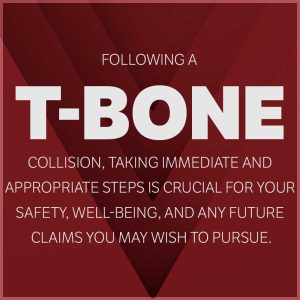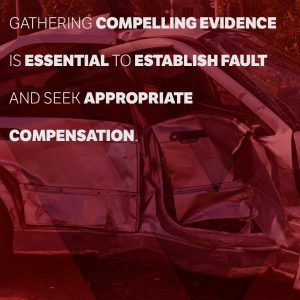
Left-turn T-bone accidents pose significant risks on Kentucky roads, often resulting in property damage, neck injuries, broken bones, internal injuries, spinal cord damage, traumatic head injuries, or even death.
Each T-bone collision, especially those with serious injuries, can lead to complex legal proceedings for determining fault and seeking compensation.
This article outlines how to reduce your chance of being in a broadside accident, what to do when T-bone accidents happen, your legal rights after a T-bone accident, and how an experienced lawyer can help you get the compensation you deserve.
Understanding Kentucky Car Accident Law
In Kentucky, the law on turning across traffic is straightforward. At a traffic light, turning drivers must yield the right of way to oncoming traffic, as well as to pedestrians and bicyclists.
When a distracted driver fails to yield in these situations, they are likely liable for hitting the other drivers.
Contact McCoy & Sparks, PLLC, Central Kentucky car accident lawyers, at 1-844-4KY-WINS, or start by filling out our online form to set up a free consultation about your accident now.
What Is a T-Bone Accident?
T-bone car accidents often occur when drivers swerve or make a sudden turn. Drivers are not aware of how fast they are going and the objects that are in their path.
As a result, vehicles may strike the side of another at intersections, forming a “T” shape because cars have a front bumper with that form.
A T-bone accident, generally caused by a driver failing to yield the right of way at a red light, may result in one vehicle striking the side of another.
Accidents at a traffic light often generate conflicting accounts from the drivers as to who had the right of way. The determination of which driver had the right of way is critical to identifying who was at fault.
Types of Errors That Can Lead to a T-Bone Car Accident
T-bone car accidents are generally caused by the violation of right-of-way laws at traffic lights.
Some of the most common right-of-way violations that may result in T-bone crashes include:
- Blocking another driver’s view
- Failure to yield to traffic at a green light
- Ignoring “no left turn on red light” signs
- Speeding
- Distracted driving
- Brake failure
- Running a red light or stop sign
- Aggressive or reckless driving
- Driving under the influence of drugs or alcohol
While most T-bone collisions occur at intersections or while making a turn, some happen on highways or straightaways.
T-bone accidents with other drivers may also happen in parking lots and driveways.
An experienced car accident lawyer knows that T-bone accidents happen when one driver loses control of his or her vehicle and crashes into the side of another.
Contact McCoy & Sparks, PLLC, Central Kentucky personal injury lawyers, at 1-844-4KY-WINS, or start by filling out our online form to set up a free consultation about your case.
How Do You Determine Fault In a T-Bone Car Accident?
Fault for a T-bone accident is generally based on which driver acted negligently. In some cases, the fault for a T-bone crash may be shared by two or more parties.
It is important to establish which driver violated right-of-way laws when the accident occurred before determining who the at-fault driver is.
At an intersection, for example, a driver making a turn who does not yield to oncoming traffic may be at fault for the crash.
This may be true even if they had a green light because oncoming traffic has the right of way at an intersection and those turning must yield.
In T-bone collisions, proving fault may be a little more complicated. There may even be some instances when a third party not directly involved in the crash may be at fault.
If a vehicle defect or malfunction leads to a T-bone crash, the vehicle manufacturer may be required to pay damages.
If the accident is caused by poor visibility, another party responsible for the obstruction could be at fault.
For example, a driver who wants to turn across traffic but can’t see a stop sign because a vehicle is illegally parked may get into an accident with oncoming traffic. Contact with the oncoming vehicle may not be the driver’s fault.
Instead, the owner of the illegally parked vehicle who blocked the stop sign may be at fault.
Statute of Limitations Related To a T-Bone Collision

Kentucky considers cross-traffic turns inherently dangerous due to the possibility of a broadside collision. Determining who is at fault is not as clear, especially when multiple drivers bear some responsibility.
Under the state’s pure comparative statute, drivers may be held responsible for accidents even if the victim shares some fault.
Kentucky’s statutes of limitations dictate that a personal injury case must be filed within one year, and a property damage insurance claim within two years, from the accident report to the date of the accident.
Kentucky’s No-Fault Car Insurance Laws
Kentucky operates under a no-fault car insurance system, where drivers involved in T-bone collisions must first seek compensation from their insurance policies.
Exceptions apply for cases involving significant injuries, opting out of the no-fault system, or pursuing a T-bone accident settlement.
What To Do Immediately Following an Accident
Following a T-bone collision, taking immediate and appropriate steps is crucial for your safety, well-being, and any future claims you may wish to pursue.
Step-by-Step Guide on What to Do After An Incident

- Ensure Safety: Move to a safe location nearby if you can do so without causing further harm or damage. This step is vital to prevent additional accidents and ensure your safety and that of other road users.
- Check for Injuries: Assess yourself and others involved for any injuries. Do not attempt to move anyone injured unless there is an immediate danger (e.g., fire), as improper movement can exacerbate injuries.
- Call Emergency Services: Dial 911 to report the accident and request medical assistance if there are any injuries, however minor they may seem.
- Exchange Information: Swap contact and insurance details with the other driver(s), including names, addresses, phone numbers, a license number for the other driver, license plate numbers, and insurance policy information. Avoid statements that could be interpreted as admitting fault.
- Document the Scene: Use your smartphone or camera to take comprehensive photos of the accident scene, including all vehicles involved, their positions on the road, any visible damages, traffic signs, and road conditions. This key evidence can be invaluable in establishing T-bone accident fault and supporting your account of events.
- Gather Witness Details: If there are any eyewitnesses, collect contact information. Objective third-party accounts of the T-bone accident can significantly strengthen your case by providing an unbiased perspective of the accident.
- Notify Your Insurance Company: Inform your insurance provider about the T-bone car accident as soon as possible. Provide them with a factual account of the incident without admitting any drivers fault, and proof of a thorough investigation.
- Seek Immediate Medical Attention: Even if you feel fine, it’s important to visit a healthcare professional for a thorough examination after a T-bone accident. Some injuries may not present immediate symptoms but could have long-term effects on your health.
- Keep Records: Collect and organize all documentation related to the accident, including medical reports, receipts for any medical expenses incurred due to the accident (medical treatments, towing, rental cars), and any correspondence with insurance companies or involved parties.
- Consult with a Legal Professional: Consult an experienced T-bone accident lawyer who specializes in auto accidents. They can help you begin the compensation claim process to recover lost wages, medical bills, pain and suffering, and damage to your property.
By following these steps, you can protect yourself and your interests after a T-bone accident, setting a solid foundation for any necessary legal or insurance proceedings.
What Type of Evidence Do I Need To Prove Liability In My Case?

In the aftermath of a T-bone accident, gathering compelling evidence is essential to establish fault and seek appropriate compensation.
Your personal injury attorney will gather some or all of these types of evidence to prove that one driver (or more) was responsible for the T-bone accident:
Eyewitness Testimony: Statements and contact information from individuals who witnessed the T-bone collision can provide valuable accounts of the events leading up to the collision, helping to corroborate your version of events and establish fault.
Traffic Camera Footage: Video recordings from nearby traffic cameras may capture crucial evidence of the accident, including the positions and movements of vehicles, traffic signals, and any violations committed by the at-fault party.
Police Report: Official police reports documenting the details of the accident, statements from involved parties, and assessments of fault by law enforcement officers serve as vital evidence in establishing liability.
Skid Marks and Vehicle Damage: Physical evidence such as skid marks on the road and damage to vehicles involved can provide insights into the dynamics of the accident, helping to reconstruct the sequence of events and determine fault.
Expert Witness Analysis: Testimony from T-bone accident reconstruction experts or automotive engineers can offer professional assessments of the accident scene, vehicle movements, and factors contributing to the collision, bolstering your case with expert opinions.
Medical Records: Comprehensive medical records detailing the extent of your injuries, treatments received, and prognosis can establish the link between the accident and your injuries, demonstrating the impact of the at-fault party’s actions on your physical well-being.
Photos and Videos of the Scene: Visual evidence from the scene, including photos and videos taken immediately after the accident, can capture road conditions, vehicle positions, and any obstacles or environmental factors that played a role in the accident.
Vehicle Inspection Reports: Reports from a thorough inspection of your vehicle post-accident can document the extent of damage and correlate it with the specifics of the crash, which is essential for proving the severity of the impact and the direction of the forces involved.
Why You Should Hire an Experienced Left-Turn Car Accident Attorney
If you want to win your case, it’s important to have a knowledgeable and experienced car accident personal injury lawyer on your side.
Car accident lawyers will be able to navigate the complexities of the legal system, help you gather evidence, and ultimately fight for the best possible outcome in your personal injury case.
Tort law is complicated even in the most straightforward situations, and when you add in the possible defenses that the other driver might have, it becomes even more difficult.
An attorney can help you understand your rights, build a strong case, negotiate with an insurance company, and if necessary, take your T-bone accident case to trial.
If you have been in a left-hand turn accident and are looking for legal assistance, contact an attorney as soon as possible.
McCoy & Sparks – Kentucky Left Turn T-Bone Accident
With McCoy & Sparks, you’ll have a Kentucky car accident lawyer with experience representing people hurt in left-turn car accidents near you. We take on T-bone accident cases throughout Kentucky and we care about our local communities.
Our experienced left-turn car accident lawyers will know what it takes to build a case on behalf of people injured in T-bone accidents.
We will help you establish a compensation claim to recover lost wages, medical bills, pain and suffering, and damage to your property. We have decades of experience and hundreds of satisfied clients to confirm our knowledge and work.
Contact McCoy & Sparks, PLLC, Central Kentucky car accident lawyers, at 1-844-4KY-WINS, or start by filling out our online form to discuss your left-turn accident now.
If you choose to visit us in person, our offices are located at 212 W. Stephen Foster Ave. in Bardstown, Kentucky.

